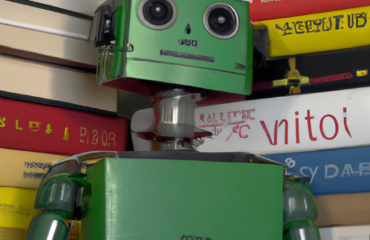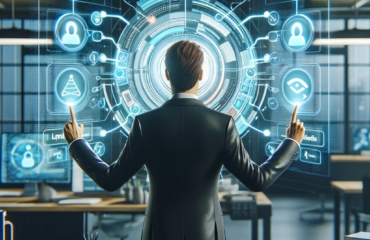The evolution of chatbot technology has been a journey marked by significant transformations, from the basic, rule-based systems of the early days to the sophisticated, AI-driven platforms we see today. This shift not only mirrors technological advancements but also dramatic changes in user expectations for digital interactions.
Way back in 2017, we introduced our first chatbot service, www.askourbot.com, leveraging technologies like Lex and Polly in an ambitious attempt to build a network of conversational chatbots. This initiative aimed to move beyond the capabilities of many first-generation chatbots, which essentially functioned as advanced contact forms, rather than as the dynamic, engaging conversational agents we envisioned.
Despite our efforts, it became evident that www.askourbot.com, along with other early attempts at creating conversational chatbots, faced significant limitations in conversational ability. The reality was that the technology at the time was not yet mature enough to fulfill the vision of true conversational chatbots. The early versions of chatbots were constrained by the available technology, limiting their ability to understand and respond to user queries with the depth and context we aimed for.
However, the landscape has dramatically changed with the advent of OpenAI and other Large Language Models (LLMs). These advancements have ushered in a new era for chatbot technology, enabling us to deliver on our original vision of creating genuinely conversational chatbots.
Today’s AI-driven platforms are capable of understanding complex queries, engaging in meaningful dialogues, and providing responses that are contextually relevant and deeply personalized. This leap in capability from simple (and frustrating), scripted interactions to true conversational intelligence has not only enhanced the user experience but has also opened up unprecedented possibilities for how businesses engage with their customers.
Our journey from www.askourbot.com to the current state of chatbot technology make it clear that the field has undergone a profound transformation.
Previous Generations of Chatbots
- Rule-Based Approach:
- Functionality: Earlier chatbots primarily operated on a rule-based approach, where responses were pre-defined based on specific inputs. These bots followed a set of established rules or decision trees to interact with users.
- Interaction Limitations: Their interactions were limited to structured queries they were programmed to understand. This often resulted in a less natural and more mechanical user experience.
- Customization and Scalability: While rule-based chatbots could be highly effective within their scope, customizing and scaling them for broader applications was challenging and labor-intensive.
- Integration and Contextual Understanding: These chatbots lacked the ability to understand context or manage complex conversations that deviated from their programmed paths. Integration with emerging technologies or platforms was also limited.
Current Generation of AI-Powered Chatbots
- AI and Machine Learning:
- Functionality: Modern chatbots leverage AI, machine learning (ML), and natural language processing (NLP) to understand, interpret, and respond to user queries with much higher accuracy and flexibility. They learn from interactions to improve over time.
- Interaction Capabilities: These chatbots offer a more natural, conversational experience, capable of understanding and generating responses to a wide range of queries, even those with ambiguity or nuanced language.
- Customization and Scalability: AI-powered chatbots can be customized and scaled more efficiently due to their learning capabilities. They can adapt to different industries, languages, and user preferences without extensive manual updates.
- Integration and Contextual Understanding: The current generation of chatbots exhibits advanced integration capabilities with various platforms and technologies. They can maintain context over a conversation, recognize user intent, and provide personalized experiences.
Key Differences and Similarities
- User Experience (UX): The most notable difference lies in the user experience. AI-driven chatbots provide a more engaging, intuitive, and human-like interaction compared to the more mechanical interactions of rule-based chatbots.
- Learning and Adaptation: Unlike their predecessors, modern chatbots continuously learn and improve from user interactions, making them more effective over time.
- Deployment Scope: While earlier chatbots were often deployed in limited or specific scenarios, current AI chatbots are versatile, serving a wide range of industries and applications, from customer service and content delivery to mental health support and personalized shopping assistants.
- Technology Integration: The integration capabilities of AI-powered chatbots are far superior, allowing for seamless operation within complex digital ecosystems, leveraging APIs, and connecting with IoT devices, CRM systems, and more.
Both generations share the common goal of automating interactions, improving user engagement, and streamlining information delivery. The evolution from branched, rule-based chatbots to AI-driven models reflects the natural progression of technology aiming to meet and exceed human expectations for interaction, personalization, and accessibility.




